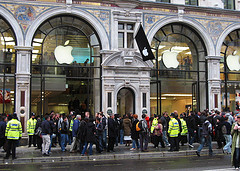
flikr/Lucius Kwok
The product life cycle model is a classic marketing tool which is used to explain the four different stages most products pass through during their limited lifetime. However, while the traditional stages of Introduction, Growth, Maturity and Decline deal with a products life once it’s in the market, the model often overlooks the equally important stages of getting a product to market, and withdrawing it once it is no longer profitable.
The Additional Product Life Cycle Stages
In recognition of new product development and the need to withdraw products from the market once they have reached the end of their profitable life, some believe that effective product life cycle management is only possible when organizations consider these two additional stages in the cycle.
Development: Before a product can have a life, it needs to be developed. A lot of manufacturers invest heavily in new product development, which can be a process that takes a lot of time and money, depending on the type of product and the market. Development involves creating a product to sell, but companies also need to gain an understanding of the market the product will eventually be sold into. Only by creating a product that is in line with what the market will want is a manufacturer going to be successful; which is perhaps why some would argue that this is one of the most important stages of the product life cycle.
Withdrawal: During the Introduction and Growth stages of the product life cycle, most manufacturers are focused on increasing their profits by developing the market and improving their sales. While some companies will also be able to reduce their costs through economies of scale, it is during the Withdrawal stage that cost management becomes even more important. Once the decision is made and a product is withdrawn, all sales stop. Therefore it’s important that manufacturers are prepared for this eventuality and make the right decisions at the right time. Having a plan in place to minimize their costs as they withdraw from a market, or even developing a new product that can take advantage of the established infrastructure and routes to market, is essential.
Understanding the Product Life Cycle
While traditionally there are four stages to the cycle, it makes a lot more sense to include the ‘before and after’ stages of Development and Withdrawal, since these can present manufacturers with just as many challenges as any of the other phases. Even with the expanded six-stage illustration of the life cycle of a product, the most important thing to understand is that it is still only a model.
Life cycles will differ from product to product, and market to market, and an increase in sales isn’t always an indication that the market is growing, just as a fall in sales doesn’t necessarily mean a market is in decline. While it’s important to appreciate products have a limited lifetime and acknowledge the different stages of the product life cycle, the successful manufacturers are typically the ones that don’t allow this model to be the sole source of information that dictates their business strategy.

